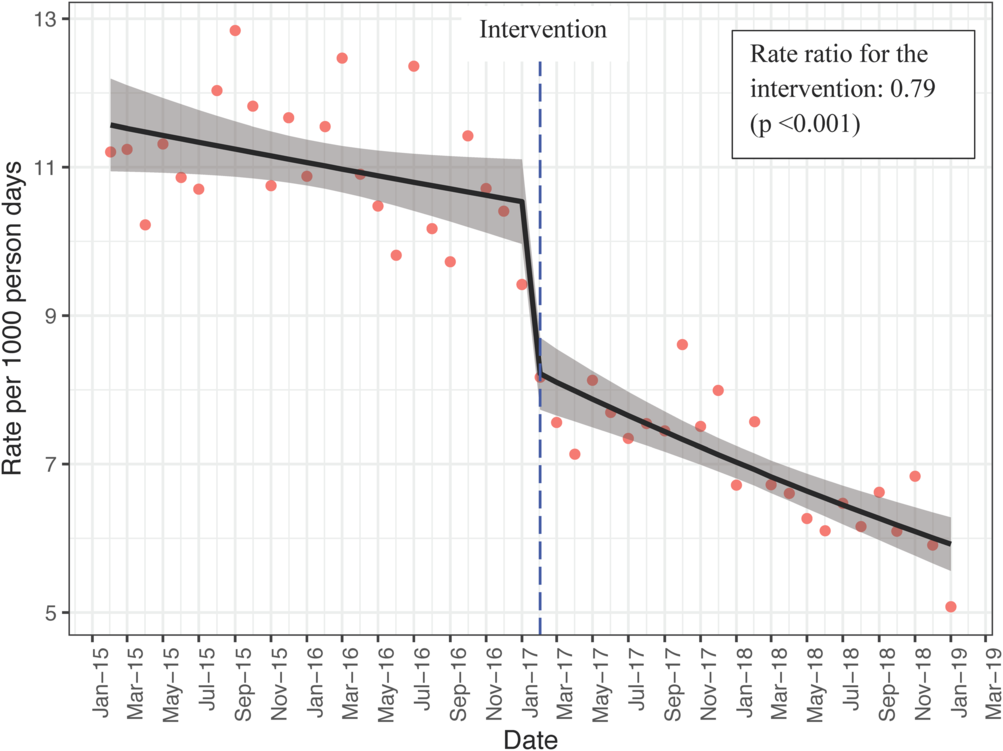Crossref Citations
This article has been cited by the following publications. This list is generated based on data provided by
Crossref.
Bai, Lu
Gao, Shijia
Burstein, Frada
Kerr, Donald
Buntine, Paul
and
Law, Nicholas
2020.
A systematic literature review on unnecessary diagnostic testing: The role of ICT use.
International Journal of Medical Informatics,
Vol. 143,
Issue. ,
p.
104269.
Emberger, Jennifer
Hitchcock, Matthew M.
and
Markley, J. Daniel
2020.
Diagnostic Stewardship Approaches to Clostridioides difficile Infection in the Era of Two-Step Testing: a Shifting Landscape.
Current Treatment Options in Infectious Diseases,
Vol. 12,
Issue. 3,
p.
258.
Green, Sarah B
Stover, Kayla R
Barber, Katie
Bouchard, Jeannette L
Brown, Matthew L
Deri, Connor R
Francis, Bailey J
Gauthier, Timothy P
Hayes, Jillian E
Marx, Ashley H
McGee, Edoabasi U
Mediwala, Krutika
Musgrove, Rachel J
Slain, Douglas
Stramel, Stefanie A
Bland, Christopher M
and
Bookstaver, P Brandon
2021.
A Baker’s Dozen of Top Antimicrobial Stewardship Intervention Publications in 2020.
Open Forum Infectious Diseases,
Vol. 8,
Issue. 9,
Sullivan, Kaede V
2021.
Diagnostic Stewardship in Clinical Microbiology, Essential Partner to Antimicrobial Stewardship.
Clinical Chemistry,
Vol. 68,
Issue. 1,
p.
75.
Krishna, Amar
and
Chopra, Teena
2021.
Prevention of Infection due to Clostridium (Clostridioides) difficile.
Infectious Disease Clinics of North America,
Vol. 35,
Issue. 4,
p.
995.
Axenfeld, Ellen
Greendyke, William G.
Li, Jianhua
Green, Daniel A.
Whittier, Susan
and
Freedberg, Daniel E.
2021.
Burden and risk factors for inappropriate Clostridioides Difficile infection testing among hospitalized patients.
Diagnostic Microbiology and Infectious Disease,
Vol. 99,
Issue. 4,
p.
115283.
Jones, K. Ashley
Onwubiko, Udodirim N.
Kubes, Julianne
Albrecht, Benjamin
Paciullo, Kristen
Howard-Anderson, Jessica
Suchindran, Sujit
Trible, Ronald
Jacob, Jesse T.
Yi, Sarah H.
Goodenough, Dana
Fridkin, Scott K.
Sexton, Mary Elizabeth
and
Wiley, Zanthia
2021.
Reductions in inpatient fluoroquinolone use and postdischarge Clostridioides difficile infection (CDI) from a systemwide antimicrobial stewardship intervention.
Antimicrobial Stewardship & Healthcare Epidemiology,
Vol. 1,
Issue. 1,
Wolf, Axel
Sant'Anna, Anita
and
Vilhelmsson, Andreas
2022.
Using nudges to promote clinical decision making of healthcare professionals: A scoping review.
Preventive Medicine,
Vol. 164,
Issue. ,
p.
107320.
Khanal, Saval
Schmidtke, Kelly Ann
Talat, Usman
Sarwar, Asif
and
Vlaev, Ivo
2022.
Implementation and Evaluation of Two Nudges in a Hospital’s Electronic Prescribing System to Optimise Cost-Effective Prescribing.
Healthcare,
Vol. 10,
Issue. 7,
p.
1233.
Fridkin, Scott K.
Onwubiko, Udodirim N.
Dube, William
Robichaux, Chad
Traenkner, Jessica
Goodenough, Dana
Angulo, Frederick J.
Zamparo, Joann M.
Gonzalez, Elisa
Khanna, Sahil
Myers, Christopher
and
Dumyati, Ghinwa
2023.
Determinates of Clostridioides difficile infection (CDI) testing practices among inpatients with diarrhea at selected acute-care hospitals in Rochester, New York, and Atlanta, Georgia, 2020–2021.
Infection Control & Hospital Epidemiology,
Vol. 44,
Issue. 7,
p.
1085.
Krouss, Mona
Israilov, Sigal
Alaiev, Daniel
Tsega, Surafel
Talledo, Joseph
Chandra, Komal
Zaurova, Milana
Manchego, Peter Alacron
and
Cho, Hyung J.
2023.
SEE the DIFFerence: Reducing unnecessary C. difficile orders through clinical decision support in a large, urban safety-net system.
American Journal of Infection Control,
Vol. 51,
Issue. 7,
p.
786.
Trirattanapikul, Akeatit
Pasomsub, Ekawat
Siriyotha, Sukanya
Pattanaprateep, Oraluck
and
Phuphuakrat, Angsana
2023.
Diagnostic stewardship to limit repeat plasma cytomegalovirus viral load testing.
BMC Infectious Diseases,
Vol. 23,
Issue. 1,
Advani, Sonali D.
and
Claeys, Kimberly
2023.
Behavioral Strategies in Diagnostic Stewardship.
Infectious Disease Clinics of North America,
Vol. 37,
Issue. 4,
p.
729.
Katzman, Michael
Cohrs, Austin C.
Hnatuck, Patricia E.
Greene, Wallace H.
Reed, Stephanie M.
Ward, Michael A.
Glasser, Frendy D.
Loser, Matthew F.
and
Hale, Cory M.
2023.
Impact of a multipronged approach to reduce the incidence of Clostridioides difficile infections in hospitalized patients.
American Journal of Infection Control,
Vol. 51,
Issue. 6,
p.
668.
Lemken, Dominic
2024.
Options to design more ethical and still successful default nudges: a review and recommendations.
Behavioural Public Policy,
Vol. 8,
Issue. 2,
p.
349.
Starolis, Meghan W.
Zaydman, Mark A.
and
Liesman, Rachael M.
2024.
Working with the Electronic Health Record and Laboratory Information System to Maximize Ordering and Reporting of Molecular Microbiology Results.
Clinics in Laboratory Medicine,
Vol. 44,
Issue. 1,
p.
95.
Eckardt, Paula
Guran, Rachel
Jalal, Ayesha T.
Krishnaswamy, Shiv
Samuels, Shenae
Canavan, Kelsi
Martinez, Elsa A.
Desai, Ajay
Miller, Nancimae
and
Cano Cevallos, Edison J.
2024.
Impact of an electronic smart order-set for diagnostic stewardship of Clostridiodes difficile infection (CDI) in a community healthcare system in South Florida.
American Journal of Infection Control,
Vol. 52,
Issue. 8,
p.
893.
Lev, Vered
Anbarchian, Teni
Yao, Hanqi
Bhat, Akanshya
Britt, Patricia
and
Shieh, Lisa
2024.
Health care–associated Clostridioides difficile infection: Learning the perspectives of health care workers to build successful strategies.
American Journal of Infection Control,
Vol. 52,
Issue. 3,
p.
284.
Saif, Nadia T.
Dooley, Cara
Baghdadi, Jonathan D.
Morgan, Daniel J.
and
Coffey, KC
2024.
Clinical decision support for gastrointestinal panel testing.
Antimicrobial Stewardship & Healthcare Epidemiology,
Vol. 4,
Issue. 1,
Pourian, Jessica J.
Blebea, Catherine
Subramanian, Charumathi R.
Auerbach, Andrew
and
Khanna, Raman
2025.
The Elements of Style for Interruptive Electronic Health Record Alerts.
Applied Clinical Informatics,
Vol. 16,
Issue. 02,
p.
402.


